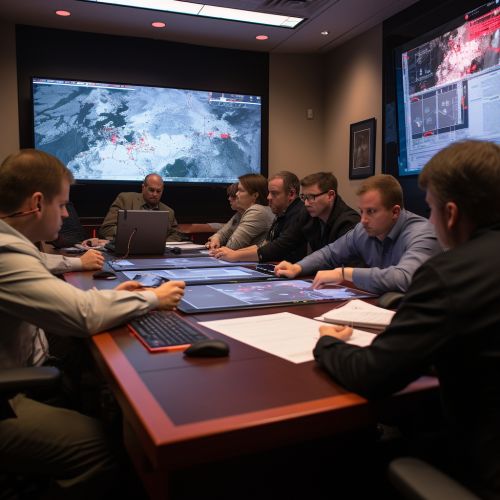Natural Disaster Management
Introduction
Natural Disaster Management refers to the systematic process by which governments, organizations, and individuals plan for and respond to natural disasters. This involves a range of activities, including risk assessment, emergency planning, and the implementation of mitigation measures to reduce the impact of disasters. The field of natural disaster management is interdisciplinary, drawing on areas such as geography, meteorology, sociology, and public policy.


Types of Natural Disasters
Natural disasters can be broadly categorized into three types: geological disasters, meteorological disasters, and biological disasters.
Geological Disasters
Geological disasters are caused by changes in the earth's crust and include events such as earthquakes, volcanic eruptions, and landslides.
Meteorological Disasters
Meteorological disasters are caused by weather and climate phenomena. These include hurricanes, tornadoes, floods, and droughts.
Biological Disasters
Biological disasters involve the spread of diseases or pests on a large scale, often exacerbated by natural events or human activity. Examples include pandemics and locust invasions.
Risk Assessment
Risk assessment is a critical component of natural disaster management. It involves identifying potential hazards, assessing the vulnerability of communities and infrastructure, and estimating the potential impacts of disasters.
Hazard Identification
Hazard identification involves determining the types of natural disasters that could potentially affect a given area. This requires a thorough understanding of the area's geology, climate, and ecosystem.
Vulnerability Assessment
Vulnerability assessment involves determining the susceptibility of communities and infrastructure to natural disasters. This includes assessing the structural integrity of buildings, the preparedness of communities, and the availability of resources for disaster response.
Impact Estimation
Impact estimation involves predicting the potential consequences of a disaster, including the number of casualties, the extent of property damage, and the potential for economic and social disruption.
Disaster Preparedness
Disaster preparedness involves developing plans and systems to respond effectively to natural disasters. This includes emergency planning, community education, and the establishment of early warning systems.
Emergency Planning
Emergency planning involves developing strategies and procedures for responding to natural disasters. This includes the allocation of resources, the establishment of emergency shelters, and the development of evacuation plans.
Community Education
Community education involves informing the public about the risks of natural disasters and teaching them how to respond effectively. This includes conducting drills, distributing informational materials, and organizing public meetings.
Early Warning Systems
Early warning systems involve the use of technology to detect impending disasters and alert the public. This includes weather radar systems, seismic monitoring networks, and flood forecasting models.
Disaster Response
Disaster response involves the actions taken to mitigate the impacts of a disaster once it has occurred. This includes search and rescue operations, the provision of emergency relief, and the coordination of recovery efforts.
Search and Rescue
Search and rescue operations involve locating and assisting individuals who have been affected by a disaster. This includes the use of rescue teams, helicopters, and search dogs.
Emergency Relief
Emergency relief involves providing immediate assistance to those affected by a disaster. This includes the provision of food, water, medical care, and temporary shelter.
Recovery Coordination
Recovery coordination involves managing the process of rebuilding and restoring communities after a disaster. This includes the coordination of cleanup efforts, the repair of infrastructure, and the provision of financial assistance.
Conclusion
Natural disaster management is a complex and critical field that requires a comprehensive and multidisciplinary approach. By understanding the types of natural disasters, conducting thorough risk assessments, preparing effectively, and responding efficiently, it is possible to mitigate the impacts of these events and protect communities.
